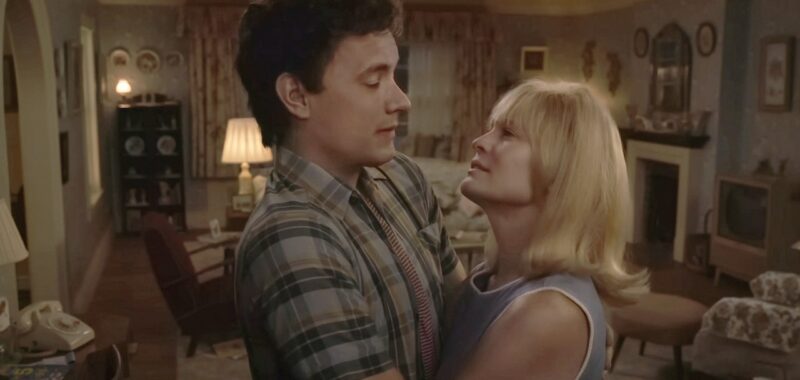Director Robert Zemeckis got his start under the mentorship of Steven Spielberg, and for a while it looked as if the former might serve as the latterâs heirâif not for the fact that they were only six years apart, and by the end of the â80s, Zemeckis was making Spielberg-sized blockbusters like Back to the Future and Who Framed Roger Rabbit alongside the master of the form. Casual observers might date the divergence between the two filmmakersâat least in terms of quality; they remain friendsâto when Zemeckis first dipped into the Uncanny Valley with The Polar Express, a holiday fantasy produced via the questionable magic of motion-capture animation. (Think of it as stop-motionâs zombie twin.) Broadly speaking, the movie actually did become a Christmas classic, repeatedly rereleased in IMAX and seen by countless children. For old-school Zemeckis fans, though, it kicked off a baffling decade of mo-cap dalliances where his groundbreaking use of technology seemed to have finally broken his brain, too. Here, a new movie reteaming Zemeckis with his frequent star Tom Hanks almost exactly 20 years later, has not been billed as a Polar Express reunion.
But the Zemeckis animation period turned out to be relatively brief; three movies over the course of six years, covering the entirety of his 2000s, but then, time flies. In retrospect, it seems obvious that the real turning point in the Zemeckis filmography is another Hanks collaboration, which just celebrated its 30th anniversary and is duly name-checked in all the ads for Here: Forrest Gump, a sort-of picaresque of 20th century, Boomer-centric history starring Hanks as a man of low IQ and high loyalty, with Robin Wright as his more turbulent-living crush. Forrest plays football, goes to Vietnam and returns unscathed, becomes a millionaire, retires to a lovably eccentric hobby (in this case, running across country), and has a son that he loves whose diapers he nonetheless does not have to change. In other words, he lives a Boomer-glorification fantasy, while Jenny (Wright) drops out, protests, plays music, gets AIDS, and dies. Youâve heard all this before.
The movie was beloved in 1994, the biggest hit of the year and the winner of the Best Picture Oscar, with Zemeckis taking home Best Director just a year after his pal Spielberg. Since thenâwell, itâs still beloved. Only Michael Bay has the gift to make America truly fall out of love with a $300 million blockbuster. Along the way and especially since, it developed a reputation for uncoolness, as any movie that beat out Pulp Fiction at the Oscars would. Despite its comic whimsy, Gump, not the Christmas cartoon, was where Zemeckis lost his anarchic energy. The movies that followedâContact; What Lies Beneath; Cast Away, also with Hanks â were accomplished and less insufferable, providing nowhere near two discsâ worth of sentimental Boomer soundtracking. Each of them features shots that combine wizardly visual effects with old-fashioned technical virtuosity. Each features terrific movie-star performances. But they were not zany. Zaniness has been in short supply for Zemeckis in the 21st century; perversely, itâs most visible in those mo-cap cartoons. Even more perversely, itâs barely there in the limp mixed-media childrenâs movies heâs made in the past few years: New takes on Roald Dahlâs The Witches and Disneyâs Pinocchio that felt oddly devoid of any spark, even the spark of playing with new techie toys to engineer impossible single takes or rapid shifts in perspective.
In this context, Zemeckis corralling Hanks, Wright, and Forrest Gump screenwriter Eric Roth to make Here (like Gump, an adaptation, this time of a graphic novel) feels like heâs getting ready to lower the Boom again, in the worst way. The movie parks itself in a fixed spot, which for much of its running time is occupied by the front room of a modest, well-constructed home across the street from a more elaborate colonial, and watches time pass. The camera, however virtual, remains static, though frames within the framesâthink of the old âpicture in pictureâ function in turn-of-the-century television sets â allow different parts of the screen to move forward quicker or slower than others, sometimes creating multi-plane, multi-time juxtapositions. Zemeckis waits for at least an hour to deploy one of his trademark trick mirror shots, a knowing and momentary disruption to the staging.
Itâs perhaps the most directly experimental film Zemeckis has ever made, though it does zero in on the family that occupies this space for, yep, that beloved second half of the 20th century. Itâs the family home of Richard Young (Hanks), whose parents Al (Paul Bettany) and Rose (Kelly Reilly) buy it after Al returns home from World War II. When Richardâs teenage sweetheart Margaret (Robin Wright) gets pregnant, it becomes their home, too, with multiple generations sharing the space, to Margaretâs eventual chagrin. We also see repeated glimpses of the families that come before and after the Youngs. Plus, at one point, dinosaurs.

